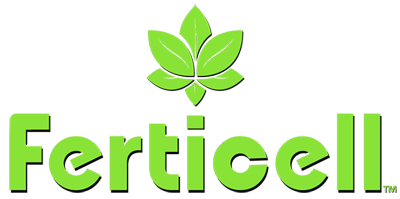
Derived from: Calcium Carbonate
ALSO CONTAINS NONPLANT FOOD INGREDIENT: 25% ALGAE EXTRACT
Information regarding the contents and levels of metals in this product is available on the internet at: http://www.aapfco.org/metals.htm
Due to the fact that soil, weather, and crop conditions may vary, Ferticell Inc. makes no guarantees or warranties, whether expressed or implied concerning the use of this product. The user of this products takes full responsibility and assumes all risks of usage or handling of this product, despite whether applications instructions were followed or not.


Calcium 880Plus™: Organic Liquid Calcium Fertilizer
Calcium is the most underestimated nutrient used in agriculture. Only nitrogen and potassium are required in larger amounts by plants.
Calcium 880Plus™ liquid calcium fertilizer is a complex of carbonate and freshwater algae extract which can be used effectively in foliar applications and most irrigation systems. It contains a natural package of unicellular algae cell extracts to encourage biological activity in the plant. The algae cells act as a facilitator of mobility for the molecule in the plant and provide the fastest and most efficient assimilation of Calcium possible.
Calcium Fertilizer 880Plus™ is processed under pharmaceutical guidelines, providing for the highest quality Calcium available. The Calcium carbonate is mined and processed to a size of less than one micron. This extremely small particle size increases the surface area of Calcium when applied to a crop, helping to increase the rate and volume of assimilation, and the mobility of the Calcium once assimilated by the plant.
Calcium plays an active role in the uptake of water and nutrients by neutralizing organic acids in the plant. Deficiencies of calcium cause well-documented fruit and vegetable disorders, such as bitter pit in apples, blossom end rot in tomatoes and peppers, soft bottom in melons, and tip burn on lettuce. Liquid calcium fertilizer for plants protects the plant by acting as a buffering agent against stress caused by soil toxicity or extremes of acidity or alkalinity.
Liquid calcium fertilizer is known to improve water penetration in most soil types and assist in soil flocculation. Calcium has the ability to displace sodium ions on the soil colloid, and also buffer salts that may be present in the root rhizosphere. Calcium is our only counterion. Calcium helps to push the soil platelets apart, creating a more suitable environment for root growth.
Calcium’s ability to reduce or prevent infections comes from its ability to increase the cuticular thickness and cell turgor pressure, effectively reinforcing or strengthening cell walls in plants. A typical sign of Calcium deficiency is the disintegration of cell walls and a collapse of the affected tissues. Plants with thicker cuticles and higher cell turgor pressure are less susceptible to infections and, if infected, are better able to fight off the infection.
Calcium also plays a role in the cell expansion/division in the plant. Cell division is a function of calcium and water, and well-maintained levels of Calcium in the tissues and fruit will provide the plant the opportunity for fruit sizing. For continued healthy growth, readily available supply of Calcium is essential.
WHY USE CALCIUM FERTILIZER 880Plus™?
FEATURES:
• One micron or less particle size
• High Calcium concentration (25% liquid formulation)
• No limiting factors, i.e. sulfates/chlorides found in most other Calcium products
• Processed under pharmaceutical guidelines
• Stability in all soil types
• Added algae extract
• Mix compatibility
• Low Salt index (5). As a comparison, Calcium nitrate has a salt index of 52.5 (Rader, 1943)
• Highly soluble and mobile
BENEFITS:
• Increased uptake through plant cells and root system
• User-friendly in most irrigation systems
• Easily incorporated in all nutrient programs (some restrictions on mixing with phosphorous)
• High corrective rates may be used with no detrimental risks
• Economical application costs
• Best management protocol for salts
• Organic calcium for plants is the only “counter” ion for sodium management
• Excellent tool for soil reclamation
• Improves soil porosity and stress tolerance
• Increases nitrogen uptake (NH4)
• Improves mobility through plant vascular systems
• Prevents premature leaf loss (senescence)
CALCIUM DEFICIENCIES
• Necrosis at the tips and margins of young leaves
• Bulb and fruit abnormalities
• Premature leaf loss
• Deformation of affected leaves
• Highly branched, short, brown root systems
• Severely stunted growth
• General chlorosis
WHAT THE LITERATURE SAYS…
• It is known that calcium, as well as phytohormones, is involved in the regulation of senescence. (Poovaiah and Leopol, 1973)
• The severity and multiplication of disease are enhanced when calcium and potassium levels are deficient. (Kiraly, 1976)
• The membrane-protecting effect of calcium is most prominent under various stress conditions such as low temperatures and anaerobiosis. (Zsoldos and Klarvaly, 1978)
• Calcium is a non-toxic mineral nutrient, even in high concentrations, and is an effective tool to detoxify high concentrations of other minerals. (Hansen, 1984)
• Calcium must be several times higher in the external solution in order to counteract the adverse effect of various other cations in the soil solution. (Asher and Edwards, 1983)
• Any sulfuric acid coming into contact with calcium carbonate will react to producing water (H2O), carbon dioxide (CO2) and calcium sulfate (CaSO4). No increase in hydrogen ion concentration occurs in this reaction; consequently, no change in soil pH can occur. (C.E. Swift, Ph.D., Colorado State University, 2010)
